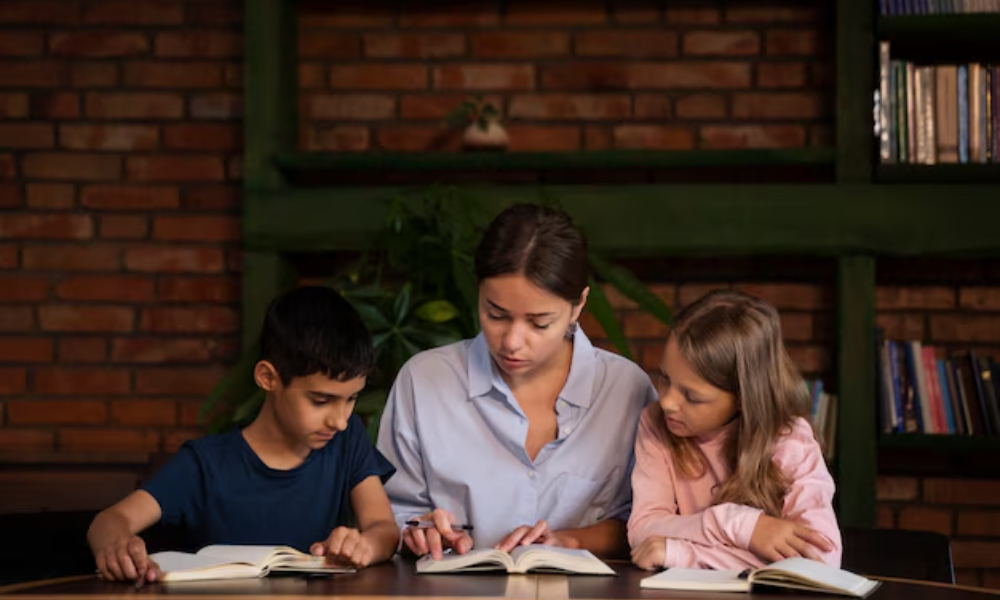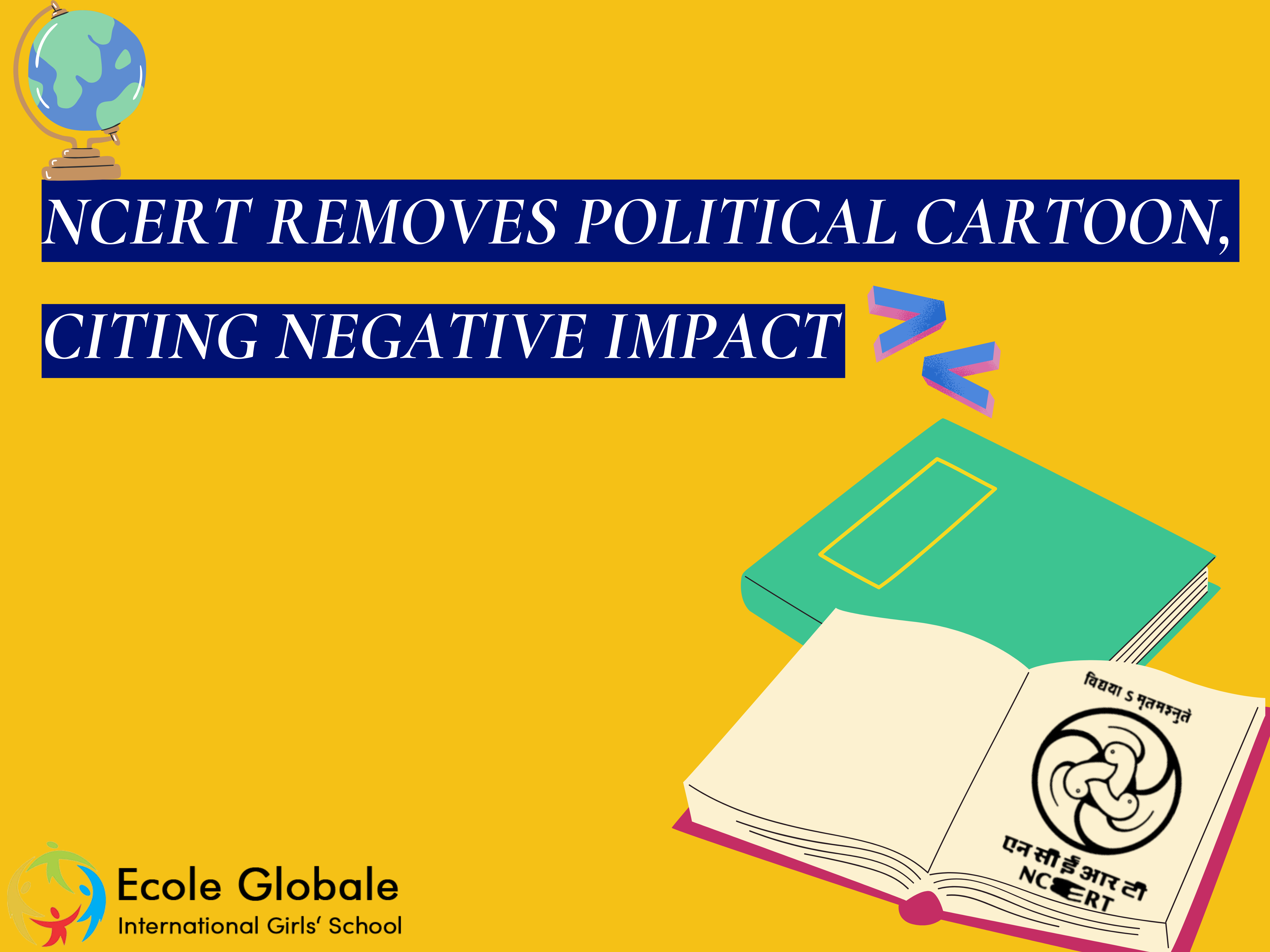New Delhi: The National Council of Educational Research and Training (NCERT) has recently made a significant change to the Class 12 Political Science textbook, removing a political cartoon that depicted the challenges faced by coalition governments in India during the 1990s. The decision, which has sparked conversations among educators and students alike, was reportedly made to avoid casting India in a “negative light.”
Background of the political cartoon

The cartoon in question, originally drawn by Ravishankar and first published in India Today magazine, featured prominent political figures from the era of coalition governments in India. Among those depicted were V.P. Singh, Chandra Shekhar, P.V. Narasimha Rao, H.D. Deve Gowda, I.K. Gujral, and Atal Bihari Vajpayee. The cartoon posed pointed questions about the survival of their respective governments and the stability of Indian democracy during that period.
NCERT’s Rationale Behind the Removal

According to an official NCERT document, the decision to remove the political cartoon was based on concerns that it portrayed India in a negative manner. The cartoon, which supplemented the chapter titled “Recent Developments in Indian Politics,” highlighted the political instability and short tenures of several prime ministers during the 1990s, a time when coalition politics was at its peak in India.
This was a period when no single party could secure a majority, leading to the formation of various coalition governments. The cartoon captured the uncertainty and fragility of these governments, raising questions about the future of democracy in India.
However, the NCERT’s recent revisions to the textbook have replaced this political cartoon with an illustration featuring two students discussing the potential future of coalition politics in India. In the new content, one student asks, “Does that mean we will always have coalitions? Or can national parties consolidate their positions again?” The other student responds, “I am not worried about whether it is a single party or a coalition government. I am more concerned about what they do. Does a coalition government involve more compromises? Can we not have bold and imaginative policies in a coalition?”
Impact on the Understanding of Indian Politics

This change has raised questions about how students will now perceive the coalition era in Indian politics. For many years, the political cartoon served as a visual tool to help students understand the complexities of coalition governments and the challenges they posed to the stability of Indian democracy. The removal of this cartoon could lead to a shift in how this important period in Indian political history is taught and understood.
Some educators argue that the cartoon provided a balanced view of the challenges faced by India during the coalition era, allowing students to critically assess the strengths and weaknesses of coalition governments. By replacing it with a more generalized discussion, there is concern that the nuances of coalition politics may be lost.
Reactions from the Education Community

The NCERT’s decision has elicited mixed reactions from educators, students, and parents. Some believe that the removal of the political cartoon is a step towards ensuring that students have a more positive perception of India’s political history, while others see it as an attempt to sanitize and simplify the complexities of the coalition era.
A political science teacher at a Delhi-based school, who wished to remain anonymous, expressed concern over the removal of the political cartoon. “This cartoon was an important teaching tool. It visually represented the political instability of the time, making it easier for students to grasp the concept of coalition politics. By removing it, we might be losing a valuable element of critical analysis in our teaching.”
On the other hand, some educators support the change, arguing that the new content still encourages students to think critically about the future of Indian politics without focusing on past instability. “The revised text encourages students to think about the future of our democracy, which is equally important,” said another teacher from a CBSE-affiliated school in Mumbai.
What This Means for Students and Parents

For students, this change in the textbook could alter the way they learn about India’s political history. The cartoon served as a visual representation of the coalition era’s complexities, offering a tangible way to understand the dynamics of multiple parties coming together to form a government. Without it, students may need to rely more heavily on textual descriptions and discussions led by their teachers.
Parents, too, may find this change significant as it impacts the way political history is taught to their children. The NCERT’s decision reflects a broader trend in educational materials to align more closely with the current political environment, which could influence how future generations understand and engage with India’s political system.
Looking Forward: The Role of Textbooks in Shaping Perspectives

The removal of the political cartoon from the Class 12 textbook is not just a change in curriculum but also a reflection of how educational content can be shaped by the socio-political context of the time. Textbooks play a crucial role in shaping students’ understanding of history and politics, and changes like these can significantly influence their perspectives.
The NCERT has stated that the revision was made in light of the post-2014 political scenario, where India has seen more stable governments, particularly under the leadership of Prime Minister Narendra Modi. The removal of the political cartoon aligns with the current narrative of political stability and progress, rather than focusing on the instability of the past.
However, this raises an important question: Should educational content be modified to reflect the current political environment, or should it strive to present a balanced view of history, including its challenges and complexities?
Conclusion: A New Chapter in Indian Political Education
As the NCERT continues to revise and update its textbooks, this latest change serves as a reminder of the ongoing debates about how history and politics should be taught in schools. For students and parents, it underscores the importance of engaging with educational content critically, asking questions, and seeking to understand the full picture of India’s political journey.
While the removal of the political cartoon may simplify the narrative of coalition politics, it also provides an opportunity for teachers and students to explore these topics in greater depth through discussion and analysis. As India’s political landscape continues to evolve, so too will the way we teach and learn about it.









